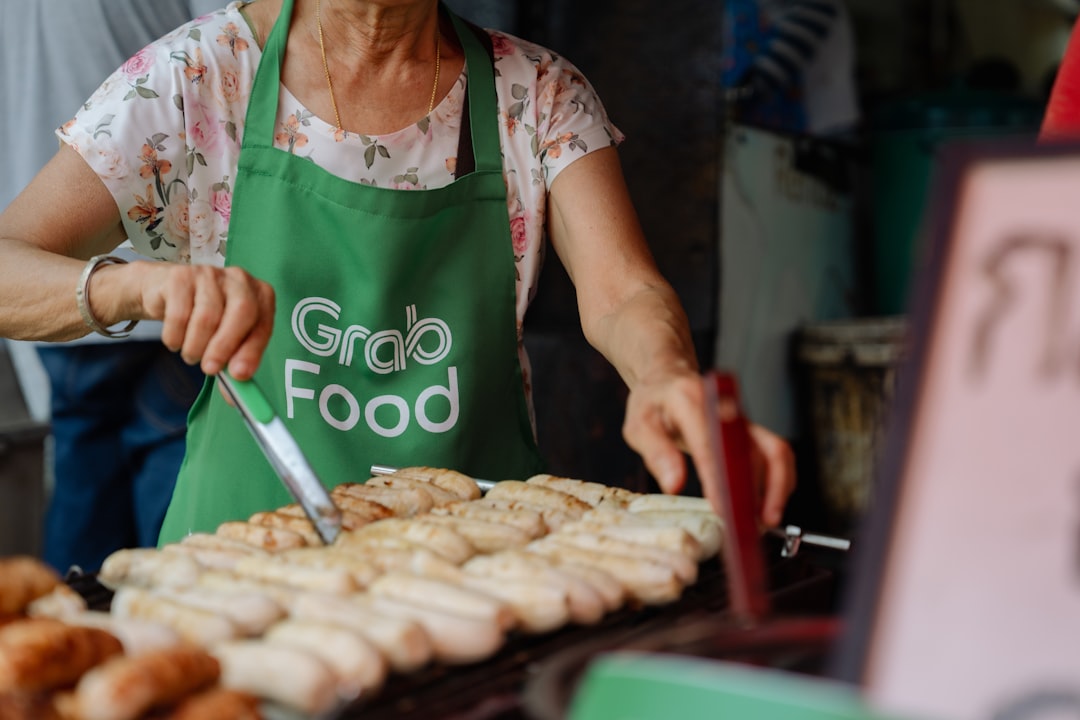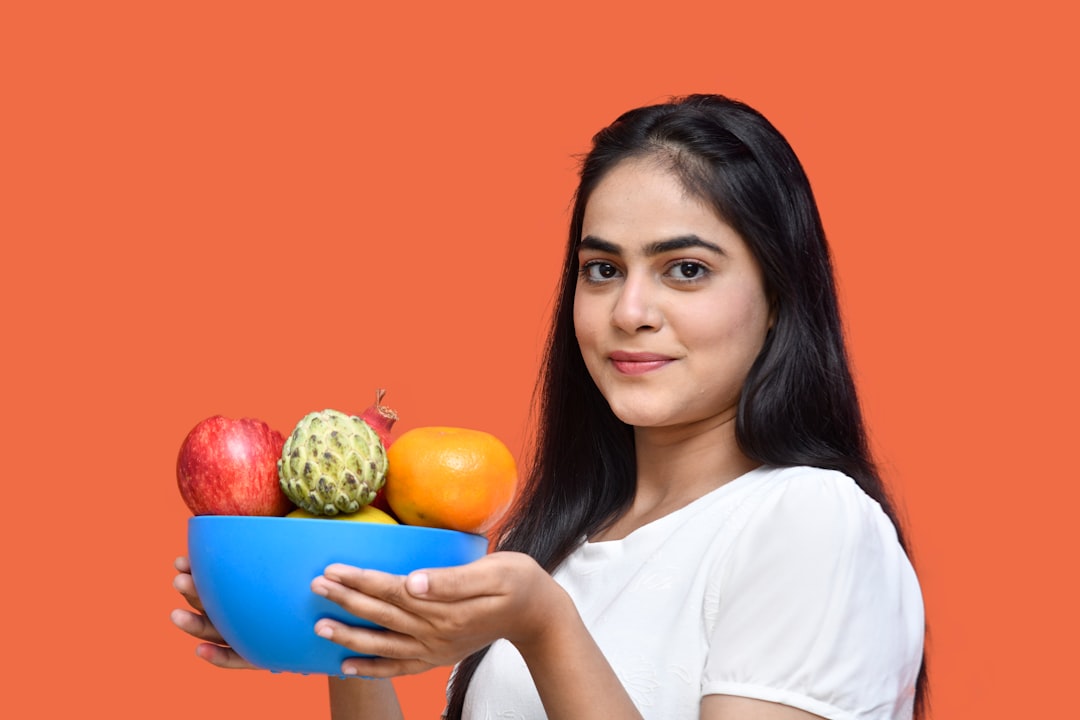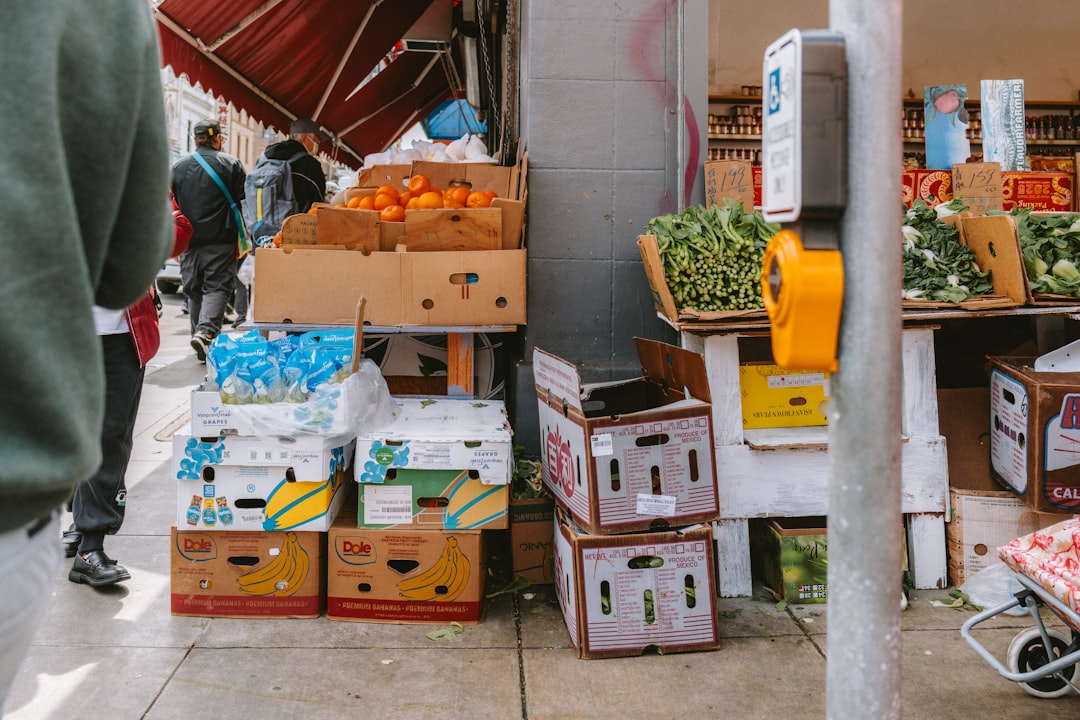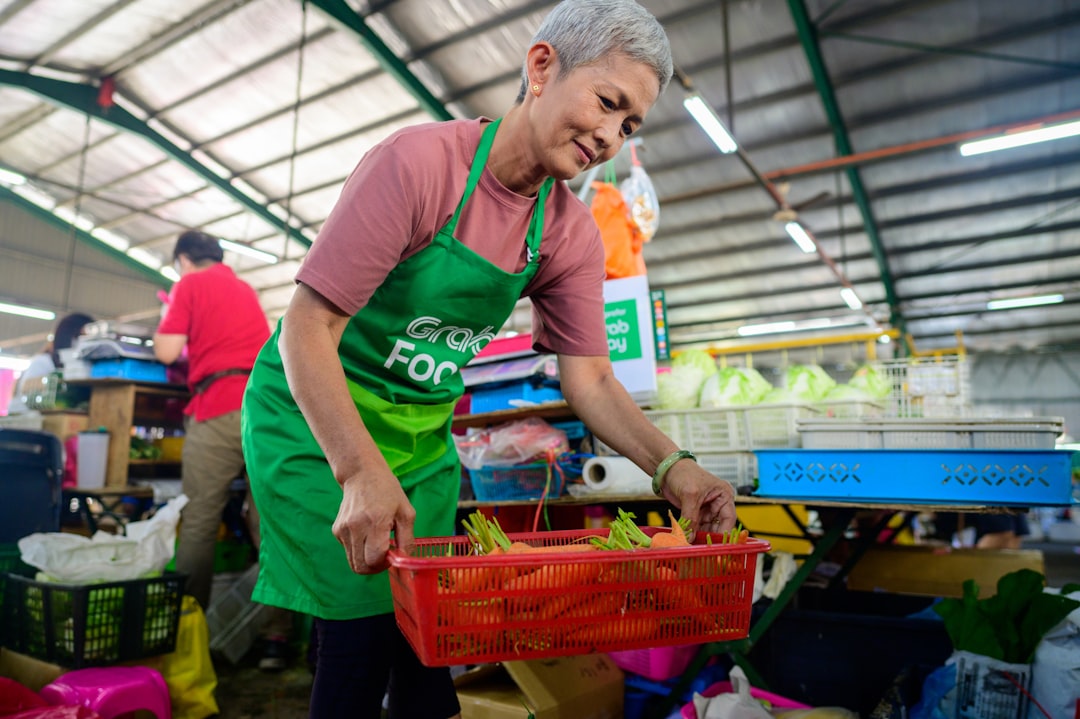

Engage prospects with a scan and streamline customer engagement with FREE QR code marketing tools by Sona – no strings attached!
Create a Free QR CodeFree consultation

No commitment

Engage prospects with a scan and streamline customer engagement with FREE QR code marketing tools by Sona – no strings attached!
Create a Free QR CodeFree consultation

No commitment
In today's digitally connected landscape, food bank charities face persistent hurdles when turning generous intent into tangible support. Many organizations still struggle with gaps in donor engagement, relying on manual donation tracking, paper pledge forms, or event-based cash collections that leave high-intent donors untracked and action unmeasured. This disconnect often results in missed opportunities, incomplete data, and challenges in demonstrating the direct impact of food bank donations.
QR codes provide a vital bridge, transforming offline moments into meaningful digital interactions. As food bank fundraising statistics reveal increasing demand and donor expectations for seamless giving, innovative solutions now allow charities to streamline donation campaigns, ensure real-time engagement, and measure campaign effectiveness with new precision. By replacing outdated workflows with frictionless QR-based experiences, organizations can unlock deeper community connections, facilitate charitable food assistance, and clearly show the outcomes delivered by local food banks.
This guide explores how QR codes can solve ongoing challenges faced by food bank charities, offering actionable strategies and technologies for capturing, attributing, and optimizing every opportunity for support.

For many food bank charities, legacy engagement tactics like physical pledge cards or manual donation sign-ups mean that high-value prospects slip through the cracks, never making it into digital tracking systems. Paper-based forms are prone to errors, delays, and lost records. Event-only cash collections do not connect supporters to follow-up communications. Static print appeals cannot adapt to evolving needs or changes in local demand. This lack of visibility not only leads to lost opportunities but also hinders timely follow-up, personalization, and accurate reporting to stakeholders.
QR codes seamlessly connect physical outreach with digital action, making every donor interaction both immediate and fully measurable. When a supporter encounters a QR code at an event, on a poster, in a direct mail piece, or on a grocery receipt, a single scan can route them to a mobile-friendly donation page, a volunteer sign-up form, an impact story, or a resource request portal. The scan becomes a data point that can be attributed to channel, campaign, and location. This creates a feedback loop where the charity learns what works, refines messaging, and nurtures supporters with relevant next steps.
Advanced tools now make it possible for charities to move beyond missed prospects. You can attribute each scan to a channel, update QR destinations as needs change, and generate reports that show outcomes by campaign, partner, or event. This level of insight helps you secure grants, reassure donors, and prove the tangible impact of each dollar raised. Start creating QR codes for free.

Food bank charities must foster steady support and timely donations, yet face persistent challenges: anonymous engagement, donor hesitation, and processes that obscure which outreach efforts drive action. Flyers, posters, and donation bins often capture attention but fail to convert that interest into traceable action. Walk-up donors at events may give once in cash, then disappear from your database. Volunteers sign up in person but are hard to reach later due to incomplete records. These gaps make follow-up inconsistent and make it difficult to justify budget allocations or partner investments.
QR codes help bridge these gaps, making every physical touchpoint a tracked digital gateway. When you activate print materials with scannable calls to action, you create an immediate path from awareness to action that requires no app and minimal effort from supporters. This lowers friction, increases completion rates for donations and forms, and gives your team insight into what works in real time.
Real-world examples include event posters that reveal previously anonymous donors who used to give cash at the door. By scanning a QR code and giving digitally, those donors receive instant receipts, you capture accurate contact details, and your CRM tags the gift to the event. Follow-up becomes timely and relevant, resulting in higher repeat donation rates and more volunteers.
Selecting the right QR code application determines whether supporter engagement grows or stagnates. For food bank charities, the best formats are those that facilitate quick action, capture accurate information, and support flexible updates. Each format has strengths depending on the task, context, and audience.
You can deploy static QR codes for unchanging destinations like a general information page, but dynamic QR codes are far more versatile for campaigns. Dynamic codes allow destination changes, collect analytics, support A/B testing, and can be tied to specific channels for attribution. In community outreach where needs shift rapidly, dynamic codes are particularly valuable.
Dynamic QR codes generated through modern platforms enable charities to update destinations and capture detailed tracking without the need to reprint materials. If a campaign’s message changes after a board meeting or an urgent appeal launches, your team can update links instantly. This agility solves longstanding pain points around inflexible campaigns and incomplete data.

Food bank charities often struggle with knowing which in-person moments translate to measurable, high-impact engagement. The aim is to place QR codes where supporter intent is naturally high and attention is focused. This could be during community giving events, at grocery partner locations, within thank-you letters, or on materials that resource seekers consult when looking for assistance. Strategic placement transforms common encounters into digital records that fuel better outreach.
Location and timing matter. Codes should be positioned where scanners can comfortably pause, scan, and complete an action within 60 to 90 seconds. Use clear CTAs and put a friendly benefit statement near the code to guide behavior. When possible, pair the QR code with a tangible prompt, such as Give a family fresh produce for one week, or Volunteer for a two-hour shift this Saturday.
Strategic placement, informed by scan and conversion analytics, ensures every visual touchpoint is not just seen but acted upon. Over time, you can refine these placements by monitoring scan heatmaps, time-of-day trends, and channel comparisons to invest in the highest-ROI locations.

Each campaign touchpoint presents a chance to either lose or nurture donor engagement. Common pain points include low event conversion, inefficient volunteer recruitment, and limited visibility into campaign ROI. QR codes give charities a repeatable way to streamline actions and track outcomes so staff can focus on meaningful stewardship instead of manual data entry. See this charity case study for inspiration.
Well-planned QR implementations align with the supporter journey. Early-stage outreach can route to impact stories that build trust. Mid-funnel interactions can offer fast volunteer sign-ups. Conversion-focused touchpoints can prioritize one-tap donations. When each step is purposeful and trackable, your retention and lifetime value improve.
Advanced tools let you link scan engagement to specific outcomes. For example, each scan can be mapped to a campaign and associated with gift type, volunteer hours, or event check-in. By building a chain of attribution, no high-value supporter goes unrecognized or uninformed.
Many food bank charities lack depth in audience tracking, which can result in generalized messaging and untargeted outreach. When QR scans are uniquely attributed by channel and use case, organizations gain precise insight into donor journeys and high-intent behavior. You can build segments for one-time donors, monthly givers, volunteers, corporate partners, and resource seekers, then tailor messaging accordingly. Use the Sona retargeting playbook to turn scanner segments into high-impact audiences.
Smart segmentation creates a compounding effect. People who scan a volunteer QR at a food drive may be open to monthly giving after their first shift. Donors who scan a receipt QR might be delighted by a follow-up that showcases the impact of their gift and invites them to join a monthly program. The goal is to let behavior guide the next best action.
With platforms such as Sona QR, each code can act as a smart entry point into your funnel. You can track scan intent, channel, and device, then orchestrate personalized journeys that move supporters from awareness to action.
A persistent challenge for charities is disconnected campaigns that scatter attention and squander learnings. QR codes act as connectors across offline and digital channels, making every poster, mailer, social post, or event sign part of a cohesive system. By embedding QR codes into each element, organizations unify messaging and create a measurable journey from first touch to donation or volunteer shift.
When scan activity syncs with your CRM, every team gains visibility. Development sees which appeals resonate. Volunteer coordinators understand which events drive sign-ups. Communications can test messages and creative variations by channel. This integrated approach ensures each dollar spent on print and events contributes to a data-rich feedback loop.
QR codes serve as the offline onramp to your digital marketing engine. With a centralized platform like Sona QR, you can manage all codes, monitor performance, and sync scan data with your CRM and ad platforms so offline engagement becomes fuel for your digital strategy.
Effective QR campaigns balance clarity, speed, and measurement. Before you print anything, decide on the action you want and the audience you are trying to reach. Then create a consistent visual system that guides people to scan and complete that action quickly. Finally, set up analytics and integrations so your team can see results and iterate with confidence.
Use this checklist as a framework for planning and execution. Each step helps avoid common pitfalls, such as unscannable codes, vague calls to action, or untracked traffic. Where possible, test on a small scale, validate results, and then scale across additional locations or partners.
Start by defining the main outcome you want from the campaign. For example, drive one-time donations at a holiday food drive, recruit volunteers for a Saturday shift, convert seasonal donors to monthly giving, or provide resource access to households in need. The use case determines your destination page, creative message, and follow-up sequence.
Decide whether to use a static code or a dynamic code. Static codes are appropriate for evergreen destinations, such as a general information page. Dynamic codes are recommended for campaigns that require analytics, attribution, and future flexibility.
Design the code and its surrounding context as a single unit. Your CTA, supporting copy, and visual frame should all guide the user to scan confidently.
Roll out your codes where they will have the greatest effect. Focus first on placements that already see strong engagement so you can generate quick wins and build internal momentum.
Measurement is essential to proving impact and improving outcomes. Treat your first deployment as a learning sprint.

Charities often struggle to prove which interactions drive real results, complicating decision-making and limiting justification for further investment. Without clear attribution, it becomes difficult to allocate resources, secure grants, or demonstrate food bank donation impact to boards and corporate partners. For measurement strategy, see Sona offline attribution.
A robust analytics setup follows the supporter journey from scan to completed action. You capture the scan event, attribute it to the right campaign, and connect it to outcomes such as donations, volunteer sign-ups, or event attendance. This makes it possible to compare ROI across channels, optimize creative, and forecast results for seasonal appeals.
Modern platforms have made it possible for food bank charities to fully map the supporter journey. With Sona QR capturing real-world scans and Sona.com connecting that engagement to revenue via identity resolution and multi-touch attribution, organizations can finally align offline engagement with digital conversion and make confident, data-driven decisions.
Pain points like incomplete donor tracking and fragmented supporter journeys can undermine even the best-intended campaigns. The most effective QR strategies are clear about the ask, obsessive about the mobile experience, and anchored in attribution so teams can learn and adapt. A few pragmatic shifts can rapidly lift results across placements and audiences.
Focus your efforts where people already show intent. Then make the path to action immediate. When someone is holding a flyer at a food drive or looking at an endcap sign in a partner grocery, the right CTA and a fast-loading page can turn a moment of goodwill into measurable support.
These strategies ensure every engagement, even a brief interaction at a crowded event or a checkout line, moves people closer to meaningful action. Over time, you build a connected ecosystem where offline encounters reliably feed your digital growth engine.
Food bank charities operate in an environment where disconnected outreach and incomplete measurement too often lead to lost donations, disengaged supporters, or inefficient operations. QR codes offer an adaptable way to transform every community encounter into a measurable digital action. The emergence of advanced analytics and campaign management tools means that, rather than guessing which tactics drive real food bank fundraising impact, organizations can now track attribution from the first scan to sustained support. By embracing these data-rich, integrated approaches, charities can deliver more consistent messaging, targeted stewardship, and ultimately deepen their positive impact on food insecurity in their communities.
As the landscape for charitable giving evolves, food bank charities must navigate the risk of missed opportunities, disconnected outreach, and difficulty demonstrating tangible outcomes. QR codes enable organizations to overcome these hurdles, providing the tools to seamlessly connect every physical campaign with digital measurement and targeted follow-up. By embedding QR-enabled strategies at each touchpoint, from in-store displays to direct mail, charities ensure every action is visible, attributable, and impactful. With a centralized platform like Sona QR for code generation, analytics, and CRM syncs, teams can launch quickly and learn faster. The result is not only more efficient fundraising but also a more engaged community and stronger capacity to meet urgent food assistance needs.
QR codes have transformed food bank charities from traditional outreach efforts into dynamic, measurable engagement channels. Whether it’s attracting new donors, enhancing volunteer experiences, or streamlining donation processes, QR codes replace cumbersome methods with instant, mobile-friendly actions that capture real-time data to maximize impact and efficiency. Imagine knowing exactly which campaigns inspire the most support—and being able to optimize them instantly.
With Sona QR, you can create dynamic, trackable QR codes in seconds, update your outreach materials without reprinting, and connect every scan directly to meaningful outcomes like donations and volunteer sign-ups. No wasted resources, no missed connections—just smarter, more impactful charity campaigns. Start for free with Sona QR today and turn every scan into a powerful step toward feeding more families in need.
You can donate by scanning a QR code found on event posters, flyers, grocery receipts, or direct mail pieces, which directs you to a mobile-friendly donation page for fast and seamless giving.
Food banks can increase donations by implementing QR code campaigns with clear calls to action, placing codes strategically at events, grocery stores, and mailers, using dynamic QR codes for flexibility, and tracking engagement to optimize outreach.
QR codes bridge offline outreach with digital actions by enabling instant donations, volunteer sign-ups, event check-ins, and client intake while providing measurable data that improves donor engagement and campaign effectiveness.
The article does not list specific food bank charities but suggests supporting local or national food bank organizations that implement digital donation methods like QR codes for transparency and impact.
Food banks use dynamic QR codes integrated with CRM and analytics platforms to automate donor tracking, personalize follow-ups, measure campaign ROI, and update donation appeals in real time without reprinting materials.
Dynamic QR codes are preferred because they allow destination updates, track scan analytics, support A/B testing, and enable attribution, making them more flexible and effective than static codes for evolving campaigns.
Effective placements include event booths, grocery partner displays, direct mail pieces, checkout receipts, and community bulletin boards where supporters have time and intent to scan and act.
By capturing scan data linked to campaigns, locations, and devices, and integrating this information with CRM systems, food banks can attribute donations and volunteer sign-ups to specific QR codes and optimize future outreach.
QR codes link to streamlined volunteer sign-up pages with shift options and reminders, reducing no-shows and improving staffing reliability by capturing accurate contact information and automating follow-ups.
Charities assign unique QR codes by channel, segment supporters by engagement type, leverage timing and location data, and sync scan data with CRM and ad platforms to tailor messaging and retarget high-intent audiences effectively.
Use Sona QR's trackable codes to improve customer acquisition and engagement today.
Create Your FREE Trackable QR Code in SecondsJoin results-focused teams combining Sona Platform automation with advanced Google Ads strategies to scale lead generation

Connect your existing CRM

Free Account Enrichment

No setup fees
No commitment required

Free consultation

Get a custom Google Ads roadmap for your business






Launch campaigns that generate qualified leads in 30 days or less.
